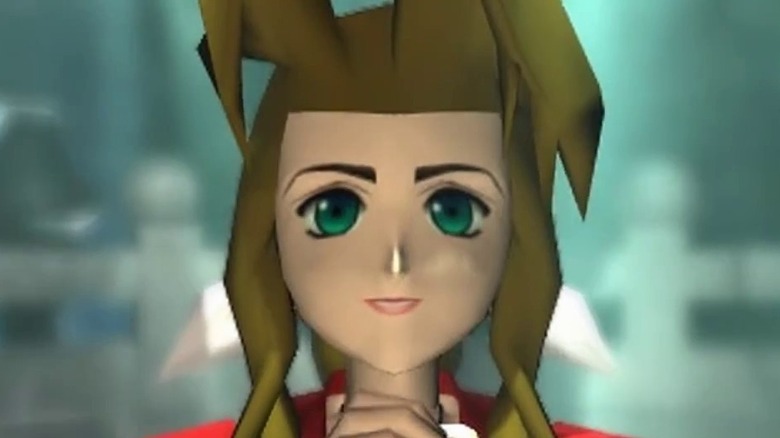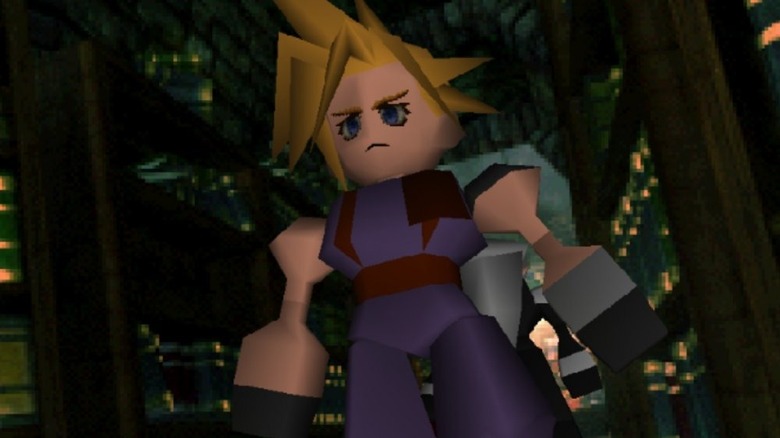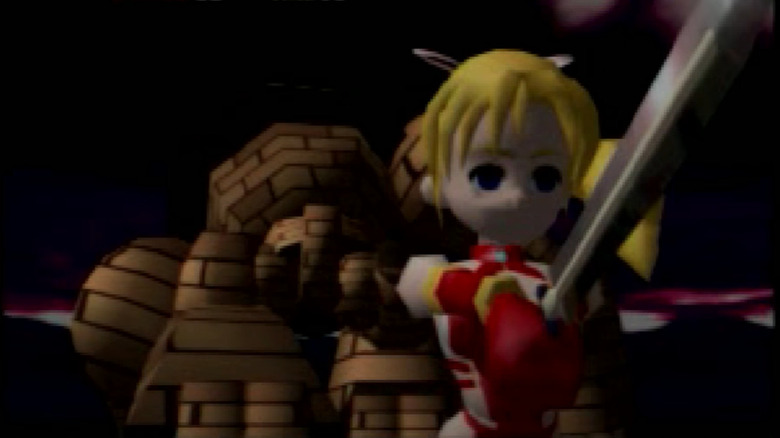Final Fantasy 7 Was Almost A Nintendo 64 Exclusive, Until It Wasn't
While console exclusivity is something of a controversial topic these days (per TheGamer), it used to be the widely accepted industry norm in gaming. Between Sony, Microsoft, and Nintendo, clear lines of brand loyalty were drawn in the gaming population that resulted in a rivalry that was mostly tongue-in-cheek — and sometimes not so tongue-in-cheek. Amidst it all, no one really thought of asking for cross-platform releases. Games were defined by their console and vice versa, much more than they are now. For a while, each platform had its own unique lineup and a notable juggernaut franchise that drew people to it: "Halo" for the Xbox, "The Legend of Zelda" for the Nintendo 64 and Gamecube, and finally, "Final Fantasy" for the Playstation.
Funny enough, the "Final Fantasy" series wasn't always the Playstation poster child. Before it ushered Sony's gaming debut to success with smash hit titles (such as "Final Fantasy 14," which became so popular it had to be temporarily pulled from shelves), it was a longtime Nintendo exclusive along with two other juggernaut fantasy JRPG franchises: "Dragon Quest" and the aforementioned "Legend of Zelda."
Hard as it is to imagine, there was a period of time after the release of "Final Fantasy 6" where "Final Fantasy 7" was expected to be a Nintendo 64 exclusive. The jump to Playstation was, at the time, a wholly unexpected and unprecedented development. Here's how it happened.
The so-called N64 demo
The real reason for the move from console to console has been the subject of debate for some time now. As corporate press releases about game development weren't exactly commonplace back then, most of the details have come from hearsay and contradicting statements on how it went down (particularly if there were any hard feelings between the companies as a result). But according to a deep dive conducted by Polygon, it all boiled down to technical limitations.
The development of "Final Fantasy 7” started in 1994, coinciding with the major shift from 2D to 3D; it was an entirely new era of gaming, with entirely new concerns to go along with it. Hironobu Sakaguchi, Square's executive producer, recalls that it was "difficult even in [his] head to picture what the battle scenes should look like." On top of it all, the team didn't have a stable development platform to work with; while Square was initially planning on continuing to work with Nintendo's next generation console, the devs were at the mercy of constantly evolving technical specifications.
In the end, Square decided it was best to start fleshing out its designs in 3D before adapting them to a console later on. Using machines bought from Silicon Graphics Inc. — one of the big names in 3D graphics at the time — the team created a demo for what a next-gen "Final Fantasy" game could look like. In 1995, "Final Fantasy 6: The Interactive CG Game" was showcased at the annual Siggraph conference in Los Angeles.
Sony made an offer Square couldn't refuse
Understandably, the screenshots from the demo were widely publicized as a "first look" at the next "Final Fantasy" title on the Nintendo 64 (called the Ultra 64 at the time). However, when the dev team actually sat down to start working with the emulators they were sent, it was discovered that the hardware just wasn't cutting it. At that point, the devs had a clear vision of the "3D role-playing game" they wanted to make — complete with detailed cutscenes and sprawling maps — but the N64 had difficulty rendering the high-polygon models at a regular framerate and the cartridges simply didn't have the capacity for the amount of content the devs envisioned.
According to Vice President Shinichiro Kajitani, Sony approached Square during this development period with an open offer to work with the tech giant's upcoming console. After a few benchmark demos on both consoles, it became clear that the PlayStation could meet the team's demands where the N64 could not. Though Square made many attempts to scale its project down to operate on Nintendo's terms, the decision to switch to Sony was more or less inevitable.
Regardless of whether the departure was amicable or not — and according to character designer Hiroshi Kawai, it was not — it's hard to deny that it was the right choice in the end. With the full scope of 3D potential, "Final Fantasy 7" became a franchise-defining title that began a new era of cinematic storytelling in the series and — arguably — in video games as a whole.



